Fleurs du Mal Magazine


Or see the index
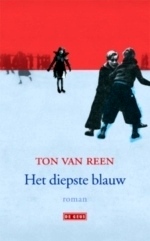 Mels vraagt zich af waarom het in de verhalen die ze van Thija hoorden, altijd draaide om een slechte moeder.
Mels vraagt zich af waarom het in de verhalen die ze van Thija hoorden, altijd draaide om een slechte moeder.
De moeder die alles had, wilde nog één ding meer, de liefde van de mensen winnen. Maar die kon ze niet krijgen omdat haar hart te koud was en haar schoonheid daardoor ijzig en onbegrepen bleef. `Schoonheid moet van binnenuit komen’, had zijn moeder altijd gezegd. Schoonheid was niet te koop.
Slechte moeders had hij niet gekend. Hun moeders waren lieve moeders geweest. Eigenzinnig ook, met veel fantasie levend in hun eigen werelden, waardoor ze het in het dorp hadden kunnen volhouden.
Van Thija’s moeder had hij nooit hoogte gekregen. Was zij zo’n slechte moeder geweest?
Ton van Reen: Het diepste blauw (018)
wordt vervolgd
fleursdumal.nl magazine
More in: - Book Stories, - Het diepste blauw, Archive Q-R, Reen, Ton van
‘De avond is ongemak’ is de debuutroman van dichter en schrijver Marieke Lucas Rijneveld.
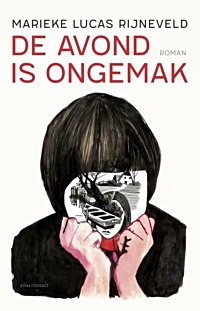 ‘De avond is ongemak’ is het schrijnende verhaal van een religieus boerengezin dat wordt getroffen door de dood van een kind.
‘De avond is ongemak’ is het schrijnende verhaal van een religieus boerengezin dat wordt getroffen door de dood van een kind.
Matthies komt op een dag niet meer terug van het schaatsen en laat zijn zusje Jas in totale verwarring achter. Door de ogen van de dertienjarige Jas zien we hoe de familieleden elk op hun eigen manier omgaan met het verlies. Vader en moeder zijn volledig verlamd door verdriet en zien niet hoe Jas en haar zusje Hanna en haar broer Obbe ondertussen langzaam ontsporen.
Onder leiding van Obbe ondernemen ze morbide experimenten met dieren en Hanna en Jas dromen hartstochtelijk van een Redder, een man als Boudewijn de Groot, een man die hen mee kan nemen naar de Overkant en hen in kan wijden in de geheimen van hun seksualiteit.
Marieke Lucas Rijneveld geldt als een van de grootste nieuwe talenten van de Nederlandse letteren. In 2015 debuteerde ze met de meermaals herdrukte dichtbundel ‘Kalfsvlies’, die werd bekroond met de C. Buddingh’ Prijs voor het beste poëziedebuut. In de Volkskrant werd ze vervolgens uitgeroepen tot literair talent van het jaar. Haar voordracht was veelvuldig te horen op literaire podia als Crossing Border, Lowlands, De Jonge Schrijversavond en de Nacht van de Poëzie, en haar gedichten en verhalen verschenen in een groot aantal literaire tijdschriften, waaronder Hollands Maandblad, VPRO Gids en De Revisor.
Rijneveld groeide op in een gereformeerd boerengezin in Noord-Brabant en woont tegenwoordig in Utrecht, de stad die haar in 2015 het C.C.S. Cronestipendium toekende en de Hollands Maandblad Aanmoedigingsbeurs. Naast haar bestaan als schrijver werkt ze op een melkveebedrijf.
Vandaag -31 januari 2018- verschijnt bij Atlas Contact haar debuutroman: ‘De avond is ongemak.’
Auteur: Marieke Lucas Rijneveld
Titel: De avond is ongemak
Roman
Nederlandstalig
Bladzijden: 272 pp.
Druk 1
Bindwijze: Paperback
ISBN10 9025444113
ISBN13 9789025444112
Uitgever: Atlas Contact, Uitgeverij
Verschijningsdatum: 31 januari 2018
€ 19,99
VPRO boeken
Marieke Lucas Rijneveld vertelt over haar roman ‘De avond is ongemak’ in het programma VPRO Boeken op zondag 4 februari 2018 om 11.20 uur op NPO 1. Presentatie: Carolina Lo Galbo
new books
fleursdumal.nl magazine
More in: - Book News, - Book Stories, Archive Q-R, Archive Q-R, Art & Literature News, Marieke Lucas Rijneveld, Rijneveld, Marieke Lucas
Insel, the only novel by the surrealist master Mina Loy, is a book like no other—about an impossible friendship amid the glamorous artistic bohemia of 1930s Paris.
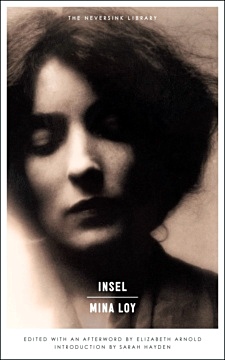 German painter Insel is a perpetual sponger and outsider—prone to writing elegant notes with messages like “Am starving to death except for a miracle—three o’clock Tuesday afternoon will be the end”—but somehow writer and art dealer Mrs. Jones likes him.
German painter Insel is a perpetual sponger and outsider—prone to writing elegant notes with messages like “Am starving to death except for a miracle—three o’clock Tuesday afternoon will be the end”—but somehow writer and art dealer Mrs. Jones likes him.
Together, they sit in cafés, hatch grand plans, and share their artistic aspirations and disappointments. And they become friends. But as they grow ever closer, Mrs. Jones begins to realize just how powerful Insel’s hold over her is.
Unpublished during Loy’s lifetime, Insel—which is loosely based on her friendship with the painter Richard Oelze—is a supremely surrealist, deliberately excessive creation: baroque in style, yet full of deft comedy and sympathy. Now, with an alternate ending only recently unearthed in the Loy archives, Insel is finally back in print, and Loy’s extraordinary achievement can be appreciated by a new generation of readers.
Mina Loy was born in London in 1882 and began her artistic career as painter; she was influenced by Impressionism and achieved success in the Parisian art world before turning to poetry and other forms of visual art, including lampshades and “junk collages.” She was at the heart of the modernist movement (as well as Dada, Futurism, and Surrealism) and had close friendships with Djuna Barnes and Gertrude Stein, among many others. Her frank and rigorously experimental writing earned her both praise and censure, as did her unconventional life: she spent many years living in Greenwich Village and on the Bowery, befriending bums, drunks, and other down-and-outs. Her work has recently been collected inThe Lost Lunar Baedeker (FSG) and Stories and Essays of Mina Loy (Dalkey Archive). She died in 1966 in Aspen, Colorado.
Elizabeth Arnold, a scholar and poet, is the author of Effacement and two other collections.
Sarah Hayden is a postdoctoral fellow at the University of Cork, where her focus is on Mina Loy and avant-garde artistic movements.
Insel
Mina Loy
Edited by Elizabeth Arnold,
with an Introduction by Sarah Hayden
Trade Paperback
Novel, 2014
180 pages
ISBN 9781612193533
Publisher Melville House
Part of The Neversink Library
“Is there anyone in America except you, Bill [William Carlos Williams,] and Mina Loy who can write anything of interest in verse?” — Ezra Pound, letter to Marianne Moore
fleursdumal.nl magazine
More in: - Book Lovers, Archive K-L, Archive K-L, Art & Literature News, Loy, Mina, SURREALISM
Das Museum der zerbrochenen Beziehungen: Was von der Liebe übrig bleibt – Geschichten und Bilder.
 Olinka und Dražen waren mal ein Paar. Irgendwann waren sie es aber nicht mehr. Zum Liebeskummer gesellte sich bei ihnen eine unangenehme Frage: Wer kriegt was?
Olinka und Dražen waren mal ein Paar. Irgendwann waren sie es aber nicht mehr. Zum Liebeskummer gesellte sich bei ihnen eine unangenehme Frage: Wer kriegt was?
Es gab Sachen, die eine Art Souvenir ihrer Beziehung waren, und da wurde es schwierig. Man will ja nichts im Regal haben, das einen jeden Tag an das Scheitern erinnert. Wegschmeißen? Geht nicht. Behalten? Würde das nicht immer wieder wehtun?
Die beiden fanden eine Lösung: Sie machten ein Museum auf.
Das Museum of Broken Relationships in Zagreb ist inzwischen weltbekannt. Mittlerweile zeigt es auch in einer Wanderausstellung rund um den Globus und einer Filiale in Los Angeles Relikte vergangenen Glücks und erzählt die dazugehörigen Geschichten.
Unter den Exponaten sind keine getrockneten Rosen, kaum Briefe. Kein Ring. Was von einer Beziehung übrig Draen Grubiic, Olinka Vitica blieb, ist beispielsweise ein türkisblauer Aschenbecher voller Zigarettenstummel.
Dazu schreibt die Person aus Köln, die ihn abgegeben hat: «Häufig wurde ich nachts wach und er lag nicht neben mir. Mein Ex-Freund fand oft keinen Schlaf, saß er stundenlang im Dunkeln auf dem Balkon, hörte Musik und rauchte. Nach unserer Trennung habe ich es nie geschafft, den Aschenbecher ein letztes Mal zu leeren, geschweige denn, ihn vom Balkon zu verbannen. Ich rauche nicht.» Die Geschichten zu den Exponaten liest man mit dem Gefühl, heimlich in fremden Tagebüchern zu blättern, doch man spürt, wie sich Neugier in Mitgefühl verwandelt. – Ein Geschenkbuch und Coffee-Table-Book der nie dagewesenen Art, mit vierfarbigen Fotos und ganz viel Herz.
Olinka Vištica und Dražen Grubišić, beide geboren im Jahr 1972, sind heute mit neuen Partnern glücklich. Vištica ist Unternehmerin. Sie hat eine eigene Produktionsfirma für Dokumentar- und Animationsfilme. Grubišić ist Grafiker und Produktionsdesigner.
Olinka Vištica, Dražen Grubišic:
Das Museum der zerbrochenen Beziehungen
Was von der Liebe übrig bleibt –
Geschichten und Bilder
Verlag: Rowohlt
Erscheinungstermin: 24.01.2018
128 Seiten
ISBN: 978-3-498-07068-7
Aus dem Englischen von Marcus Gärtner
Die Originalausgabe erschien 2017 unter dem Titel
«The Museum of Broken Relationships» bei
Grand Central Publ. Book/Hachette Book Group Inc., New York.
Deutsche Erstausgabe
1. Auflage Februar 2018
Copyright © 2018 by Rowohlt Verlag GmbH,
Reinbek bei Hamburg
Copyright © 2017 by Olinka Vištica & Dražen Grubišicc
Innengestaltung Daniel Sauthoff
Satz Abril OTF (InDesign) im Verlag und bei
Pinkuin Satz und Datentechnik, Berlin
Lithografie Cleeves Reprotechnik, Hamburg
Druck und Bindung CPI books GmbH, Leck, Germany
Hardcover €15,00
new books
fleursdumal.nl magazine
More in: - Book News, - Book Stories, - Objets Trouvés (Ready-Mades), Archive G-H, Archive U-V, Exhibition Archive, FDM Art Gallery, Spurensicherung

The hundred best books
First there’s the Bible,
And then the Koran,
Odgers on Libel,
Pope’s Essay on Man,
Confessions of Rousseau,
The Essays of Lamb,
Robinson Crusoe
And Omar Khayyam,
Volumes of Shelley
And venerable Bede,
Machiavelli
And Captain Mayne Reid,
Fox upon Martyrs
And Liddell and Scott,
Stubbs on the Charters,
The works of La Motte,
The Seasons by Thompson,
And Paul de Verlaine,
Theodore Mommsen
And Clemens (Mark Twain),
The Rocks of Hugh Miller,
The Mill on the Floss,
The Poems of Schiller,
The Iliados,
Don Quixote (Cervantes),
La Pucelle by Voltaire,
Inferno (that’s Dante’s),
And Vanity Fair,
Conybeare-Howson,
Brillat-Savarin,
And Baron Munchausen,
Mademoiselle De Maupin,
The Dramas of Marlowe,
The Three Musketeers,
Clarissa Harlowe,
And the Pioneers,
Sterne’s Tristram Shandy,
The Ring and the Book,
And Handy Andy,
and Captain Cook,
The Plato of Jowett,
And Mill’s Pol. Econ.,
The Haunts of Howitt,
The Encheiridion,
Lothair by Disraeli,
And Boccaccio,
The Student’s Paley,
And Westward Ho!
The Pharmacopœia,
Macaulay’s Lays,
Of course The Medea,
And Sheridan’s Plays,
The Odes of Horace,
And Verdant Green,
The Poems of Morris,
The Faery Queen,
The Stones of Venice,
Natural History (White’s),
And then Pendennis,
The Arabian Nights,
Cicero’s Orations,
Plain Tales from the Hills,
The Wealth of Nations,
And Byles on Bills,
As in a Glass Darkly,
Demosthenes’ Crown,
The Treatise of Berkeley,
Tom Hughes’s Tom Brown,
The Mahabharata,
The Humor of Hook,
The Kreutzer Sonata,
And Lalla Rookh,
Great Battles by Creasy,
And Hudibras,
And Midshipman Easy,
And Rasselas,
Shakespear in extenso
And the Æneid,
And Euclid (Colenso),
The Woman Who Did,
Poe’s Tales of Mystery,
Then Rabelais,
Guizot’s French History,
And Men of the Day,
Rienzi, by Lytton,
The Poems of Burns,
The Story of Britain,
The Journey (that’s Sterne’s),
The House of Seven Gables,
Carroll’s Looking-glass,
Æsop his Fables,
And Leaves of Grass,
Departmental Ditties,
The Woman in White,
The Tale of Two Cities,
Ships that Pass in the Night,
Meredith’s Feverel,
Gibbon’s Decline,
Walter Scott’s Peveril,
And—some verses of mine.
Mostyn Turtle Pigott
(1865-1927)
The hundred best books
• fleursdumal.nl magazine
More in: - Book Lovers, - Book Stories, Archive O-P, Archive O-P, Mostyn Turtle Pigott
`Vandaag gaan we vertellen’, zegt Thija, terwijl ze voor de jongens uit de straat uit hinkelt en een zak ulevellen omhoog houdt. Ze springt recht op de zon af, die als een roze reuzensinaasappel boven de graansilo uit rijst en roestig licht over de betonnen reus giet.
 In een paar tellen wordt het grijze gevaarte, dat het hele dorp beheerst, rozerood geverfd, een fraai decor waartegen de hinkelende Thija in haar paarse jurk afsteekt als een praline op een suikertaart.
In een paar tellen wordt het grijze gevaarte, dat het hele dorp beheerst, rozerood geverfd, een fraai decor waartegen de hinkelende Thija in haar paarse jurk afsteekt als een praline op een suikertaart.
Mels gooit een paar stenen naar de zon, die hulpeloos in de lucht hangt en zich niet kan verschuilen voor kwajongens.
`Ik heb over China gedroomd’, zegt Thija, terwijl ze even stilstaat om haar haren achter haar oren te strijken. `Mijn hoofd zit vol nieuwe verhalen.’
`Er klopt geen fluit van jouw verhalen over China’, zegt Tijger rustig. `Alles wat ik erover heb gelezen, is heel anders dan wat jij vertelt.’ Mels kijkt ervan op dat Tijger zo tegen haar praat.
`Je kunt er pas over oordelen als je er zelf bent geweest’, zegt Thija. `Boeken liegen. Binnenkort zie je zelf dat ik gelijk heb.’
`Geloof je echt dat we ooit uit dit gat wegkomen?’ vraagt Tijger. `Een reis naar China is veel te duur. Misschien over tien of twintig jaar.’
`Zo lang wil ik niet wachten’, zegt Thija.
`Hoe komen we er dan achter of jouw China echt bestaat?’ Tijger speelt weer voor ongelovige Thomas.
`Ik geloof je wel’, valt Mels haar bij. `Dat jouw moeder naar Radio Formosa luistert, zegt me genoeg.’
`Dat zegt niets’, zegt Tijger. `Mijn moeder luistert naar Radio Luxemburg, maar ze is nog nooit in Luxemburg geweest.’
`Mijn vader reist de hele wereld rond’, zegt Thija.
`Daar hoef je geen Chinees voor te zijn’, zegt Tijger. `Over iemand die we nooit zien, kun je vertellen wat je wilt. Is het waar dat je ouders gescheiden zijn?’
`Nee. Waarom vraag je dat?’
`Er wordt over gepraat.’
`Oh!’
`Waarom is je vader er nooit? Ik heb hem nog nooit gezien.’
`Dat komt door zijn werk.’
`Wat doet hij dan?’
`Dat weet ik niet.’
`Hij woont hier niet.’
`Wel.’
`Geef maar toe dat hij een spion is’, zegt Tijger. `Misschien wel voor China. Voor de communisten. Luistert je moeder daarom naar Radio Formosa? Zijn jullie allemaal spionnen?’
Thija blijft rustig.
`Als je vertelt dat je vader een eskimo is, of twaalf tenen heeft, moeten wij ook maar aannemen dat het waar is.’
`Toevallig heeft hij twaalf tenen’, zegt Thija, alsof het heel gewoon is. `Waarom zou ik over hem liegen? Wat doen zo’n paar tenen meer ertoe? Is hij dan geen mens? Binnenkort gaan we met hem mee op reis. Dat heeft hij ons beloofd.’
`Jullie boffen’, zegt Mels jaloers. `Hier gaat nooit iemand op reis, niet eens voor een paar dagen.’
`En grootvader Bernhard dan’, zegt Tijger. `Die is zeeman geweest.’
`Dat is een halve eeuw geleden. Hij was de enige in die tijd. Hij is wél in China geweest. Maar daarna is hij ook hier gebleven.’
`Zijn verhalen over China zijn heel anders dan die van Thija’, zegt Tijger.
`Het China van vroeger bestaat niet meer’, zegt Thija. `De communisten zijn aan de macht. Die willen alles anders.’
`Maar het China van grootvader heeft tenminste écht bestaan. Wat jij vertelt is fantasie.’
`Ik zal er nooit meer iets over zeggen.’
`Dat bedoel ik niet’, zegt Tijger haastig. `Jouw verhalen zijn prachtig. Het maakt me helemaal niet uit of ze waar zijn of gefantaseerd.’
`Dus toch vertellen?’
`Ja.’
`Dan vertel ik nu over Sneeuwwitje.’
`Dat is toch niet Chinees?’
`Toch wel. In het verhaal van Sneeuwwitje gaat het erom dat de koningin haar knappe stiefdochter haatte omdat de spiegel zei dat niet zij maar Sneeuwwitje de mooiste vrouw in het land was. Zulke verhalen over moeders en stiefmoeders die hun kinderen haten, worden er ook verteld in China.’
Ton van Reen: Het diepste blauw (017)
wordt vervolgd
fleursdumal.nl magazine
More in: - Book Stories, - Het diepste blauw, Archive Q-R, Reen, Ton van
“Romy Schneider est bien plus qu’une star de cinéma. Elle est une véritable icône, un symbole fort pour une génération entière.
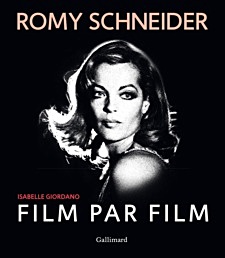 Femme libre, artiste accomplie, elle continue de fasciner encore aujourd’hui. Elle incarne la femme moderne, elle est l’image même de ces femmes qui, dans les années 1970, ont cherché à gagner leur liberté et la maîtrise de leur destin.
Femme libre, artiste accomplie, elle continue de fasciner encore aujourd’hui. Elle incarne la femme moderne, elle est l’image même de ces femmes qui, dans les années 1970, ont cherché à gagner leur liberté et la maîtrise de leur destin.
Elle est “l’image de toutes les femmes” comme le disait si justement Claude Sautet. On aime Romy car dès son plus jeune âge, elle rue dans les brancards et s’élève contre sa famille et une mère étouffante.
On aime Romy car elle aime aimer les hommes, sans entraves et sans barrières. Mais on l’aime aussi parce qu’elle est une mère attentive et chaleureuse, parce qu’elle a choisi de prendre sa vie à bras-le-corps, plutôt deux fois qu’une, avec passion toujours : “Dans la vie, comme au cinéma, j’applique la devise Tout ou rien. La témérité est quelque chose qui m’a toujours aidée à avancer.”
Tels sont les mots de Romy. Elle est une Antigone des temps modernes qui, comme l’héroïne grecque, affirme haut et fort “Je veux tout!”” Isabelle Giordano.
Isabelle Giordano
Romy Schneider, film par film
Albums hors série, Gallimard Loisirs
Parution : 05-10-2017
256 pages, ill.,
sous couverture illustrée,
245 x 285 mm, cartonné
ISBN : 9782742450350
Gencode : 9782742450350
Prix € 39,90
Gallimard Loisirs
fleursdumal.nl magazine
More in: - Book News, - Book Stories, Archive G-H, Archive S-T, AUDIO, CINEMA, RADIO & TV, The Ideal Woman, THEATRE
Van onzen correspondent bevat de artikelen die Willem Elsschot in de jaren 1918-1922 schreef voor de Nieuwe Rotterdamsche Courant. Ze zijn bijeengezocht en van een geschiedenis voorzien door C.J. Aarts en M.C. van Etten.
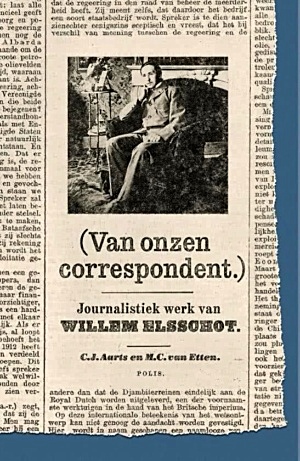 Bijna niemand weet dat Willem Elsschot kort na de Eerste Wereldoorlog een paar jaar de Antwerpse correspondent van de Nieuwe Rotterdamsche Courant was. Elsschot brengt nuchter verslag uit, maar laat zijn sarcastisch commentaar niet achterwege.
Bijna niemand weet dat Willem Elsschot kort na de Eerste Wereldoorlog een paar jaar de Antwerpse correspondent van de Nieuwe Rotterdamsche Courant was. Elsschot brengt nuchter verslag uit, maar laat zijn sarcastisch commentaar niet achterwege.
Terwijl Antwerpen herrijst, heeft Elsschot een scherp oog voor alle ellende van de bevolking: de woningnood, de voedselschaarste, de afbladderende verf, de werkloosheid. Bovenal was Elsschot er zich steeds van bewust dat hij zijn bijdragen aan de Nieuwe Rotterdamsche Courant schreef voor Nederlandse lezers.
C.J. Aarts en M.C. van Etten schetsen in dit prachtig vormgegeven en geïllustreerde boek hun fascinerende zoektocht naar de journalist Willem Elsschot. Van onzen correspondent is dan ook een verrassende aanvulling bij de biografie van deze grote schrijver.
Willem Elsschot (1882–1960) is de beroemde auteur van een klein, maar fijnzinnig literair oeuvre. Zijn journalistiek werk is tot nu toe nauwelijks bekend.
C.J. Aarts (1947) en M.C. van Etten (1948) zijn de samenstellers van de uitgeverijgeschiedenis 175 jaar Nijgh & Van Ditmar (2012) en van een tiental bloemlezingen, waaronder de zeer succesvolle bloemlezing Domweg gelukkig, in de Dapperstraat (1990).
Willem Elsschot, van onzen correspondent
Auteur(s): C.J. Aarts, M.C. van Etten
Hardcover
Formaat 150 x 230
Aantal pagina’s 352
Publicatiedatum 24 nov. 2017
ISBN 978-94-6310-170-7
€ 34,99
Pelckmans uitgevers
new books
fleursdumal.nl magazine
More in: - Book News, - Book Stories, Archive E-F, Archive E-F, Art & Literature News, LITERARY MAGAZINES, PRESS & PUBLISHING, Willem Elsschot
Nooit meer waren ze bij haar thuis geweest. Thija’s moeder bleef op zichzelf.
 Soms ging ze een dag weg en vroeg aan Mels’ moeder of ze op Thija wilde letten. Eén keer in de maand. Waar ze naartoe was wist niemand, zelfs Thija niet. Of ze wist het wel en wilde het niet zeggen. ‘s Avonds kwam ze thuis met volle boodschappentassen.
Soms ging ze een dag weg en vroeg aan Mels’ moeder of ze op Thija wilde letten. Eén keer in de maand. Waar ze naartoe was wist niemand, zelfs Thija niet. Of ze wist het wel en wilde het niet zeggen. ‘s Avonds kwam ze thuis met volle boodschappentassen.
Voor het oppassen op Thija kreeg Mels’ moeder een blik lychees. Ingemaakte vruchten in een blik met een opschrift in Chinese karakters. In het Engels stond erop: Imported from China. Spuugzoet waren ze. Als je erop zoog, brandde de suiker in je keel.
Nu denkt hij dat Thija’s moeder naar Rotterdam ging, want alleen daar waren toen Chinese winkels waar ze zulke dingen verkochten.
Ton van Reen: Het diepste blauw (016)
wordt vervolgd
fleursdumal.nl magazine
More in: - Book Stories, - Het diepste blauw, Archive Q-R, Reen, Ton van
#1 New York Times bestseller Milk and Honey is a collection of poetry and prose about survival. About the experience of violence, abuse, love, loss, and femininity.
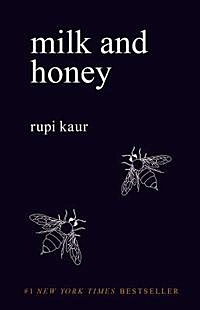 The book is divided into four chapters, and each chapter serves a different purpose. Deals with a different pain. Heals a different heartache. Milk and Honey takes readers through a journey of the most bitter moments in life and finds sweetness in them because there is sweetness everywhere if you are just willing to look.
The book is divided into four chapters, and each chapter serves a different purpose. Deals with a different pain. Heals a different heartache. Milk and Honey takes readers through a journey of the most bitter moments in life and finds sweetness in them because there is sweetness everywhere if you are just willing to look.
rupi kaur is a bestselling author and illustrator of two collections of poetry. her artistic expression began at the age of 5 when her mother handed her a paintbrush and said—draw your heart out. while studying at the university of waterloo rupi self-published her first collection milk and honey in 2014.
milk and honey became an international phenomenon that’s been translated into over 30 languages and sold over 2.5 million copies. rupi’s long-awaited second collection the sun and her flowers was published in 2017 and immediately debuted as a #1 global bestseller. through her poetry rupi explores a variety of themes ranging from love. loss. trauma. healing. femininity. migration. revolution.
rupi is a storyteller and chronicler. there’s a simplicity and nuance to her work that has found a home in the hearts of millions. this magic is best captured in her stage performances which are magnetic musical interactions of poetry art and theatre. in the years to come rupi hopes to continue her artistic exploration through art and poetry—searching for ways to understand and articulate the world around her.
Milk and Honey
by Rupi Kaur
Publisher Andrews McMeel Publishing
Publication date 10/2015
US Edition
Binding Trade Paperback
208 pages
Price € 13.50
ISBN 9781449474256
new poetry books
fleursdumal.nl magazine
More in: - Book Lovers, - Book News, Archive K-L, Archive K-L, Art & Literature News, Kaur, Rupi
Fifty years after it first appeared, one of Noam Chomsky’s greatest essays will be published for the first time as a timely stand-alone book, with a new preface by the author.
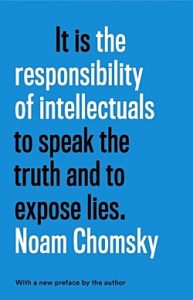 As a nineteen-year-old undergraduate in 1947, Noam Chomsky was deeply affected by articles about the responsibility of intellectuals written by Dwight Macdonald, an editor of Partisan Review and then of Politics. Twenty years later, as the Vietnam War was escalating, Chomsky turned to the question himself, noting that “intellectuals are in a position to expose the lies of governments” and to analyze their “often hidden intentions.”
As a nineteen-year-old undergraduate in 1947, Noam Chomsky was deeply affected by articles about the responsibility of intellectuals written by Dwight Macdonald, an editor of Partisan Review and then of Politics. Twenty years later, as the Vietnam War was escalating, Chomsky turned to the question himself, noting that “intellectuals are in a position to expose the lies of governments” and to analyze their “often hidden intentions.”
Originally published in the New York Review of Books, Chomsky’s essay eviscerated the “hypocritical moralism of the past” (such as when Woodrow Wilson set out to teach Latin Americans “the art of good government”) and exposed the shameful policies in Vietnam and the role of intellectuals in justifying it.
Also included in this volume is the brilliant The Responsibility of Intellectuals Redux, written on the tenth anniversary of 9/11, which makes the case for using privilege to challenge the state. As relevant in 2017 as it was in 1967, The Responsibility of Intellectuals reminds us that “privilege yields opportunity and opportunity confers responsibilities.”
All of us have choices, even in desperate times.
Title The Responsibility of Intellectuals
Author Noam Chomsky
Publisher New Press, The
Format Hardcover
Nb of pages 112 p.
ISBN-10 162097343X
ISBN-13 9781620973431
Hardcover – $16.95
Publication Date 07 November 2017
fleursdumal.nl magazine
More in: - Book News, - Book Stories, Archive C-D, Art & Literature News, LITERARY MAGAZINES, MONTAIGNE, Noam Chomsky, PRESS & PUBLISHING
De wereld kwam niet eerder zo hard binnen in de gedichten van Remco Campert.
Ik zag een jongetje zitten
verwezen op een stoeltje
bedekt met bloed
en asgrauw puinstof
onder een huis weggehaald
met bommen bestookt
door Assads moordenaarstroep
dit gedicht helpt hem niet
maar het is genoteerd
Gevoelig voor de tijdgeest raapt Remco Campert de scherven van de wereld op en smelt ze om tot taal. Hij neemt de poëzie mee naar buiten, waar hij met ‘regels dikbuikig van woorden de oude foxtrot’ danst. Met een open blik bevraagt hij de poëzie, daagt haar uit, onderzoekt haar onbeholpenheid. Zo vernieuwt hij zichzelf. Zijn bevlogen gedichten roepen om vrijheid: ‘open die kooi voor het laatst en voorgoed’.
en nu jij die binnenkomt
ik open als een bloem
een oester een deur
word van ik tot wij
Remco Campert (1929) is dichter, romancier en columnist.
 Voor zijn poëzie ontving hij onder meer de Reina Prinsen Geerligsprijs, de Poëzieprijs van de gemeente Amsterdam, de Jan Campertprijs, de P.C. Hooft-prijs en De Gouden Ganzenveer. In 2015 werd hij bekroond met de Prijs der Nederlandse Letteren.
Voor zijn poëzie ontving hij onder meer de Reina Prinsen Geerligsprijs, de Poëzieprijs van de gemeente Amsterdam, de Jan Campertprijs, de P.C. Hooft-prijs en De Gouden Ganzenveer. In 2015 werd hij bekroond met de Prijs der Nederlandse Letteren.
De vader van Remco Campert was de dichter Jan Campert, die ‘Het Lied der Achttien Dooden’ schreef, zijn moeder de actrice Joeki Broedelet.
Voorjaar 1950 richt Remco Campert met Rudy Kousbroek het tijdschrift Braak op. In juli van hetzelfde jaar wordt de redactie uitgebreid met Lucebert en Bert Schierbeek.
Na het verschijnen van de bloemlezing Atonaal in 1951, onder redactie van Simon Vinkenoog, worden de daarin opgenomen dichters onder wie Gerrit Kouwenaar, Jan G. Elburg en Hugo Claus, aangeduid als de Vijftigers.
Remco Camperts verhalen en romans worden gewaardeerd door een groot publiek en boeken als Het leven is vurrukkulluk (1961) en Tjeempie! of Liesje in luiletterland (1968) staan nog steeds op de leeslijsten.
In 1976 ontvangt hij de P.C. Hooftprijs voor zijn poëzie: ‘Het hele poëtische oeuvre van Remco Campert overziend, is de jury onder de indruk gekomen van de persoonlijke kroniek van de jaren 1950-1970 die erin is neergeschreven. De hachelijke en belachelijke feiten van deze levensperiode zijn door de dichter onvergetelijk geboekstaafd.’
Van 1989 tot 1995 leest Campert met Jan Mulder en Bart Chabot in theaters voor uit eigen werk. Van 1996 tot 2006 schrijft Campert samen met Mulder een gezamenlijke column op de voorpagina van de Volkskrant, CaMu.
Sinds 2012 heeft hij in deze krant een eigen wekelijkse column en daarnaast zijn ‘Somberman’, over het gelijknamige personage dat hij voor het eerst opvoerde in Somberman’s actie, het Boekenweekgeschenk van 1985.
In 2004 verscheen Een liefde in Parijs, zijn eerste roman in meer dan tien jaar, die zeer lovend werd besproken en uitgroeide tot een grote bestseller. Het Parool schreef: ‘Hier is de meester aan het werk.’
In 2006 volgde Het satijnen hart, een weemoedig portret van een schilder die tot op hoge leeftijd niet kan kiezen tussen liefde en kunst. Recent verschenen onder meer de roman Hôtel du Nord (2013), de dichtbundels Licht van mijn leven (2014, met litho’s van Ysbrant) en Verloop van jaren: 40 poëtische notities (2015) en De ziel krijgt voeten (2013), het fotoboek dat hij maakte met zijn dochter Cleo Campert.
Zijn verzamelde columns voor de Volkskrant zijn te lezen in Het verband tussen de dingen ben ik zelf (2012), Te vroeg in het seizoen (2014) en Vandaag ben ik een lege kartonnen doos (2015).
Remco Campert houdt nooit op met schrijven, sinds begin 2016 heeft hij ook een column in Elsevier. In de loop van dit jaar zullen de Somberman-verhalen verschijnen onder de titel Somberman op drift en eveneens een nieuwe bundeling van zijn columns.
Auteur: Remco Campert
Titel: Open ogen
Januari 2018
Druk:1
Hardcover
Nederlandstalig
80 pagina’s
Uitgever: De Bezige Bij
€ 17,99
ISBN10 9023462831
ISBN13 9789023462835
fleursdumal.nl magazine
More in: Archive C-D, Archive C-D, Art & Literature News, Campert, Remco, Remco Campert, Remco Campert
Thank you for reading Fleurs du Mal - magazine for art & literature